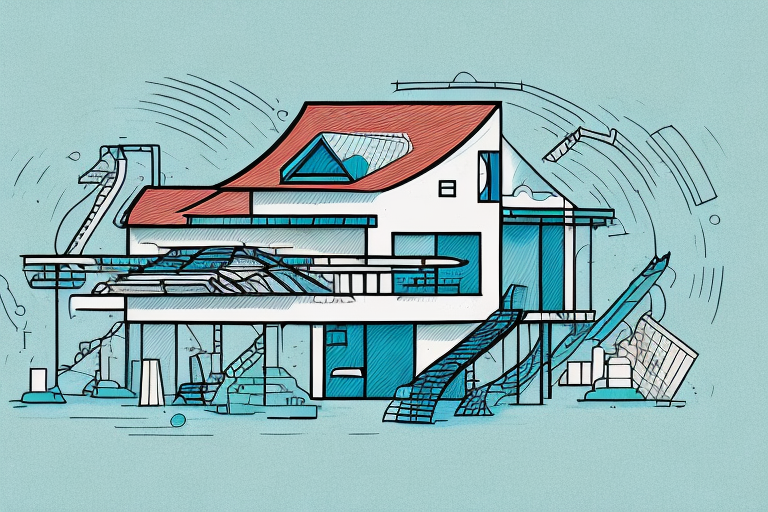Conveyancing is an essential part of any real estate transaction. It involves the legal transfer of property ownership from one party to another. While it may seem like a complex process, understanding the basics can help you navigate through it smoothly.
Understanding the Basics of Conveyancing
Conveyancing refers to the legal process of transferring property ownership. It involves a series of steps that ensure the buyer obtains a good and marketable title, free from any encumbrances or legal issues.
When it comes to buying or selling a property, there are many legal aspects that need to be taken care of. One of the most important steps in this process is conveyancing. It is the process of legally transferring the ownership of a property from the seller to the buyer. It may sound simple, but it is a complex process that involves a lot of paperwork and legal formalities.
Conveyancing is not just about signing a contract and exchanging money. It is a detailed process that requires the involvement of various professionals, including solicitors, conveyancers, and sometimes even surveyors. These professionals help ensure that the property being transferred is free from any legal issues and that the buyer gets a clear title.
What is Conveyancing?
Conveyancing is the legal transfer of property ownership from the seller to the buyer. It involves preparing, executing, and registering the necessary legal documents, including contracts and deeds.
The process starts with the buyer making an offer to purchase the property. Once the offer is accepted, the solicitors or conveyancers of both parties get involved. They start by conducting searches and investigations to ensure that the property is legally sound and there are no hidden issues.

During the conveyancing process, the solicitors or conveyancers draft and exchange contracts, negotiate terms, and deal with any issues that may arise. They also ensure that all necessary documents, such as the transfer deed and mortgage deed, are correctly prepared and executed.
Once all the legal formalities are completed, the final step is the registration of the transfer of ownership with the relevant authorities. This ensures that the buyer’s ownership is legally recognized and recorded.
The Importance of Conveyancing in Real Estate
Conveyancing plays a crucial role in real estate transactions as it protects the interests of both the buyer and the seller. It ensures that the property being transferred is free from any undisclosed debts, liens, or legal disputes. Additionally, it facilitates a smooth transition of ownership and provides legal certainty to all parties involved.
One of the main reasons why conveyancing is important is that it helps identify any potential issues with the property. Through thorough searches and investigations, the solicitors or conveyancers can uncover any legal problems, such as outstanding mortgages, boundary disputes, or planning restrictions. This allows the buyer to make an informed decision and avoid any future complications.
Furthermore, conveyancing provides protection to the buyer in terms of the ownership of the property. By ensuring that the buyer gets a good and marketable title, conveyancing helps safeguard their investment. It gives them the confidence that they are purchasing a property that is legally theirs and free from any encumbrances.
For sellers, conveyancing ensures that the property is properly transferred to the buyer and that they receive the agreed-upon payment. It helps protect their interests and ensures a fair and legal transaction.
In conclusion, conveyancing is a vital part of the property buying and selling process. It ensures that all legal requirements are met, protects the interests of both parties, and provides peace of mind. Whether you are a buyer or a seller, it is important to seek the assistance of professionals who specialize in conveyancing to ensure a smooth and successful transaction.
The Key Stages of the Conveyancing Process
The conveyancing process can be broken down into several key stages, each with its own set of tasks and requirements. Let’s take a closer look at each stage and explore the intricacies involved.
Pre-contract Stage
The pre-contract stage is a crucial phase in the conveyancing process. It involves gathering and reviewing all the necessary information related to the property. This includes conducting various searches to uncover any potential issues that may affect the property’s value or future use.
One of the most common searches conducted during this stage is the local authority search. This search provides information about planning permissions, building regulations, and any other restrictions or proposals that may affect the property. Additionally, an environmental search is often carried out to identify any potential environmental risks, such as contaminated land or flood risks.
Another important search is the title search, which confirms the legal ownership of the property and checks for any restrictions or rights that may affect the transaction. This search ensures that the property can be legally transferred to the buyer without any encumbrances.
Aside from the searches, the buyer’s solicitor also plays a crucial role in drafting and negotiating the terms of the contract. This includes defining the purchase price, the completion date, and any special conditions or contingencies. The buyer’s solicitor ensures that the contract is fair and protects the buyer’s interests throughout the transaction.
Contract Exchange Stage
Once both parties have agreed to the terms of the contract, the next stage is the exchange of contracts. This is a significant milestone in the conveyancing process as it marks the point where both the buyer and the seller become legally bound to the transaction.
During the contract exchange stage, the buyer typically pays a deposit, usually around 10% of the purchase price, to the seller’s solicitor. This deposit serves as a commitment from the buyer and provides some assurance to the seller that the buyer is serious about the purchase. It is important to note that until the completion stage, either party can still withdraw from the transaction, but they may be liable for penalties or forfeit their deposit.
Additionally, during this stage, the buyer’s solicitor will review the property’s title deeds and any additional legal documents to ensure that everything is in order. Any outstanding issues or concerns will be addressed and resolved before proceeding to the completion stage.

Completion Stage
The completion stage is the final step in the conveyancing process and is when the property officially changes ownership. It is an exciting and eagerly anticipated moment for both the buyer and the seller.
During the completion stage, the buyer’s solicitor transfers the balance of the purchase price to the seller’s solicitor. Once the funds have been received, the seller hands over the keys to the buyer, symbolizing the transfer of ownership.
Following completion, the buyer’s solicitor registers the transfer of ownership with the relevant land registry. This is a crucial step to ensure that the property is officially recorded under the new owner’s name, providing legal proof of ownership.
It is worth mentioning that after completion, the buyer’s solicitor will also settle any outstanding fees and taxes, such as stamp duty land tax, to ensure compliance with legal requirements.
As you can see, the conveyancing process involves several key stages, each with its own complexities and requirements. It is a meticulous and detailed process that aims to protect both the buyer and the seller throughout the transaction. By understanding these stages, you can navigate the conveyancing process with confidence and ensure a smooth and successful property transaction.
Role of a Conveyancer in Real Estate Transactions
A conveyancer plays a crucial role in facilitating a successful real estate transaction. They are legally qualified professionals who specialize in property law and provide guidance and assistance throughout the conveyancing process.
But what exactly does a conveyancer do? Let’s dive deeper into their duties and responsibilities.
Duties of a Conveyancer
A conveyancer’s primary role is to ensure that the legal aspects of the transaction are handled correctly. They conduct all the necessary searches and investigations to verify the property’s legal status and identify any potential issues.
These searches may include checking the property’s title, searching for any outstanding mortgages or liens, and investigating any potential planning or zoning restrictions that may affect the property.
Once the conveyancer has completed these searches and investigations, they compile a detailed report for their client, outlining any potential risks or concerns that may arise during the transaction.
Additionally, a conveyancer drafts and reviews all the legal documents, such as contracts and deeds, to protect their client’s interests. They ensure that these documents accurately reflect the agreed-upon terms and conditions of the transaction.
During the negotiation process, a conveyancer may also provide advice and guidance to their client, helping them make informed decisions regarding the purchase or sale of the property.
Furthermore, a conveyancer acts as a liaison between the buyer and seller, as well as their respective solicitors. They ensure that all parties are kept informed throughout the conveyancing process and facilitate a smooth and timely exchange of contracts and completion.
Choosing the Right Conveyancer
When choosing a conveyancer, it is important to consider their experience, reputation, and level of expertise in real estate transactions. Taking the time to research and select a reputable conveyancer can greatly minimize potential risks and complications during the conveyancing process.
It is also essential to choose a conveyancer who is familiar with the specific area where the property is located. Local knowledge can be invaluable in navigating any unique legal requirements or local regulations that may apply.
Additionally, it is advisable to seek recommendations from trusted sources, such as friends, family, or real estate professionals who have previously worked with a conveyancer. Their firsthand experiences can provide valuable insights into the conveyancer’s professionalism, efficiency, and overall quality of service.

Finally, it is important to consider the conveyancer’s fees and charges. While cost should not be the sole determining factor, it is essential to understand the conveyancer’s fee structure and ensure that it aligns with your budget and expectations.
By choosing the right conveyancer, you can have peace of mind knowing that your real estate transaction is in capable hands. Their expertise and guidance will help navigate the complex legal landscape, ensuring a smooth and successful outcome.
Common Challenges in the Conveyancing Process
Despite the best efforts of all parties involved, there are several common challenges that can arise during the conveyancing process. Being aware of these challenges can help you prepare and address them effectively.
Delays in the Process
Delays can occur due to various reasons, such as delays in obtaining necessary documentation, unresolved legal issues, or even simple logistical challenges. To mitigate potential delays, it is important to ensure all required documents are prepared in advance and promptly respond to any requests or inquiries.
Dealing with Legal Issues
Legal issues can often arise during the conveyancing process. These may include boundary disputes, unresolved planning permission issues, or encroachments on the property. A skilled conveyancer can help identify and address these issues, ensuring a smooth resolution and minimizing any potential legal complications.
Tips for a Smooth Conveyancing Process
While conveyancing can sometimes be a complex process, there are several steps you can take to help ensure a smooth transaction.
Preparing Your Documents Early
One key tip is to gather and prepare all the necessary documents as early as possible. This includes documents related to your identity, financing, and the property itself. By having these documents readily available, you can expedite the process and avoid unnecessary delays.
Communicating Effectively with Your Conveyancer
Clear and open communication with your conveyancer is vital throughout the process. Make sure to promptly provide any requested information or documentation and promptly address any questions or concerns they may have. Effective communication can help prevent misunderstandings and ensure a successful conveyancing process.In conclusion, understanding the conveyancing process in real estate is crucial for both buyers and sellers. By familiarizing yourself with the basics, key stages, and challenges, you can navigate the process more confidently. Moreover, involving a seasoned conveyancer and following practical tips can help ensure a smooth and successful transaction.
